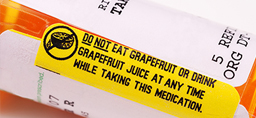
A drink or two gives most people an inner glow.
But for some, alcohol can have an external impact, too, with skin reactions ranging from hives, rashes or a bright red complexion.
Known as alcohol flush reaction, the phenomenon stems from several different causes, including heredity, allergies and medications.
Genetics are responsible for many cases, as some people have a gene mutation that makes metabolizing alcohol very difficult.
Understanding why that happens requires a quick chemistry lesson. To break down alcohol—whether in beer, wine or the hard stuff—the body needs an enzyme called alcohol dehydrogenase.
That converts alcohol to acetaldehyde, a toxic molecule.
In most people, another enzyme—aldehyde dehydrogenase—kicks in. But in some, particularly many of Asian descent, there’s a genetic deficiency of an enzyme that helps break down alcohol.
“Without it, they can only drink a few sips before this flushing begins,” Corewell Health allergist Karyn Gell, MD, said.
Flushing is only part of the discomfort that comes from this toxic byproduct.
“Your heart rate can go up. You may get nauseous. You feel awful because you’re inviting in a toxin you can’t break down,” Dr. Gell said.
There is ongoing research on ways to solve this, she said.
But that effort presents an ethical challenge for scientists. Drinking any alcohol is known to increase the risk of some esophageal cancers in those with this genetic mutation. And, in the general population, even moderate drinking is linked to higher rates of head, neck, breast and colorectal cancer.
There’s also the risk that people become addicted to alcohol. About 5.8% of people ages 18 and older have alcohol use disorder.
“Those risks are raising questions about whether it’s wise to allow genetic modification for this enzyme deficiency,” she said. “Enabling people to drink increases the risk of some serious health problems.”
A tendency to flush
Alcohol flush reaction isn’t limited to any one segment of the population.
“Some people are just prone to flushing,” Dr. Gell said. That group includes many people with rosacea, which impacts some fair-haired, lighter-skinned people. “They just blush or flush more easily.”
People who have experienced hives, or urticaria, are also more susceptible. About 20% of the population has experienced these itchy bumps and blotches at some point.
“Many of them will tell us, ‘If I have just a little bit of alcohol, boom, my hives come out,'” Dr. Gell said.
Alcohol is a vasodilator, which means it forces blood to the skin. And it can be linked to underlying allergies and sensitivities.
Others may experience nasal congestion almost as soon as they raise a glass.
These allergic reactions can be complex, Dr. Gell said. And because beer, wine and spirits are made with such a vast universe of ingredients, sniffing out the culprit can prove challenging.
“Alcohol may cross-react with some of the pollens,” she said. “As many of these hoppy beers have become more popular, I’ve had more people say, ‘Why am I having all these problems when I drink beer at a microbrewery?'”
Hops, the flowers that give beer its bitterness, flavor and aroma, can cross-react with grass, she said.
“Often, these same people will say, ‘Oh, and I have terrible springtime allergies.'”
Red wines contain histamines, which are also problematic for some people. Many blame sulfites for this problem—and the internet is chock-full of ostensible solutions.
Dr. Gell remains skeptical of those.
“I haven’t been able to find any medical research about their effectiveness,” she said.
“I’ve even read about a case where a man, who’d been drinking red wine his entire life, had a terrible allergic reaction. The problem was the type of oak the cask had been made from.”
Part of the detective work of allergists involves determining the right tests to give patients, she said. Many things that might be in an alcoholic drink are also in foods high in histamines—such as fermented foods, shellfish and eggplant— and high in tyramine, such as aged cheese and cured meats.
“Often, we can get clues when people tell us they can’t eat certain foods, such as strawberries or tomatoes,” Dr. Gell said. “Those, too, can make them experience flushing, itching or nausea.”
To drink, or not to drink?
Over the years, Dr. Gell has heard plenty of strategies as people look for tricks and hacks to enable them to have a few flush-free drinks now and then.
Even if people have never had an alcohol flush reaction, she advises them to be alert to changes, especially after starting a new drug.
Alcohol can cause dangerous reactions with so many medications, she said, including common antibiotics, anti-fungal, malaria treatments and some diabetes medications.
“When people get these drugs at the pharmacy, they come with warnings not to drink alcohol, but so many people don’t read them,” she said.
 /a>
/a>
 /a>
/a>
 /a>
/a>